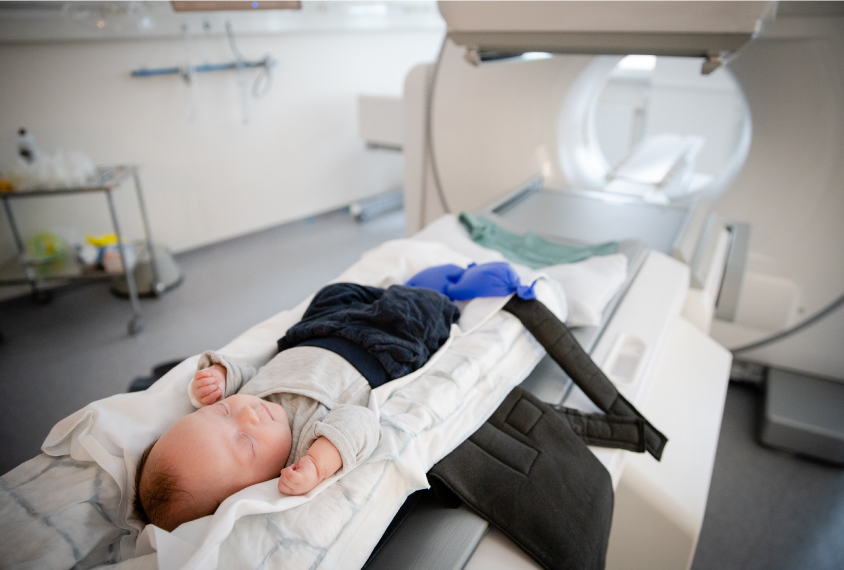Connections between the cerebellum and multiple brain networks do not seem to contribute substantially to the emergence of autism traits, according to unpublished research presented virtually today at the 2021 Society for Neuroscience Global Connectome.
The cerebellum, a brain structure located at the base of the skull, is traditionally thought of as being involved in the coordination of movement. “But increasingly there’s a lot of research indicating that it has a more general kind of predictive function,” says Zoë Hawks, a graduate student mentored by Desirée White and John Pruett at Washington University in St. Louis, who presented the work.
This new understanding has led researchers to suspect that the cerebellum could play a role in the motor and social characteristics of autism.
Hawks and her colleagues analyzed brain scans from 94 infants enrolled in the Infant Brain Imaging Study. Some analyses reported today involved ‘baby sibs’ — infants who have older siblings with autism and stand an increased chance of being diagnosed with autism — and others involved a mix of baby sibs and infants without a family history of autism.
The brain scans measured functional connectivity, or synchronous activity between brain regions.
The researchers looked for relationships between an infant’s degree of cerebellar connectivity at 6 months and the presence of autism-associated characteristics, such as poor motor coordination, at 12 and 24 months. They also looked at whether 6-month cerebellar connectivity relates to having an autism diagnosis at age 2.
Specifically, they examined connectivity between the cerebellum and the frontoparietal network, which is involved in detecting and responding to errors, and the cerebellum and the default mode network, which is active during daydreaming and sleep.
Multiple comparisons:
A previous analysis of IBIS data showed that patterns of functional connectivity across the whole brain can predict which 6-month-old infants will later be diagnosed with autism. In the new work, however, multiple statistical tests all failed to uncover a link between cerebellar connectivity and autism or autism behaviors.
“I didn’t find much of a signal at all related to the cerebellum,” Hawks says.
So the researchers took a broader view: They searched across the whole brain and found three pairs of networks between which stronger connectivity at 6 months predicts later autism-related behaviors. But the cerebellum isn’t a big player in these networks.
“It wasn’t what we were expecting to find. But I think it’s a really promising direction for future research,” Hawks says.
The analysis revealed that 6-month-olds with strong connectivity between the posterior frontoparietal and visual networks exhibit prominent repetitive behaviors at 24 months of age. Those with high connectivity between the anterior frontoparietal and posterior default mode networks have poor fine motor coordination at 12 months, and those with strong connectivity between the anterior default mode network and cingulo-opercular network, which is involved in control of attention, have poor gross motor skills at 12 months.
These results are in line with other findings that implicate the default mode network in autism and that suggest autism brains show connections between networks that aren’t commonly coupled. For example, it’s unusual for the default mode network to link to sensory networks and to networks involved in particular tasks, Hawks says.
The researchers plan to investigate these networks further in additional analyses. Studies at other time points or using other imaging methods could still uncover links between the cerebellum and the emergence of autism traits, Hawks says.
Read more reports from the 2021 Society for Neuroscience Global Connectome.






